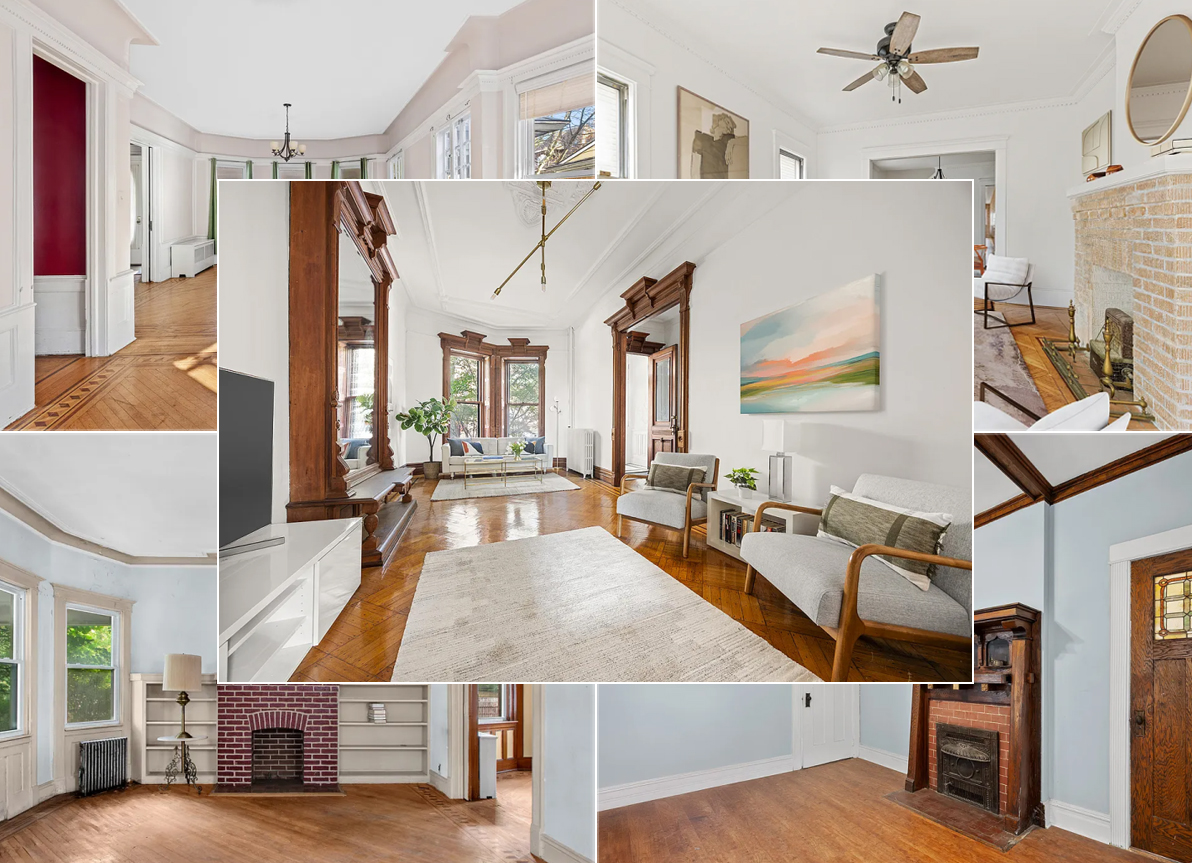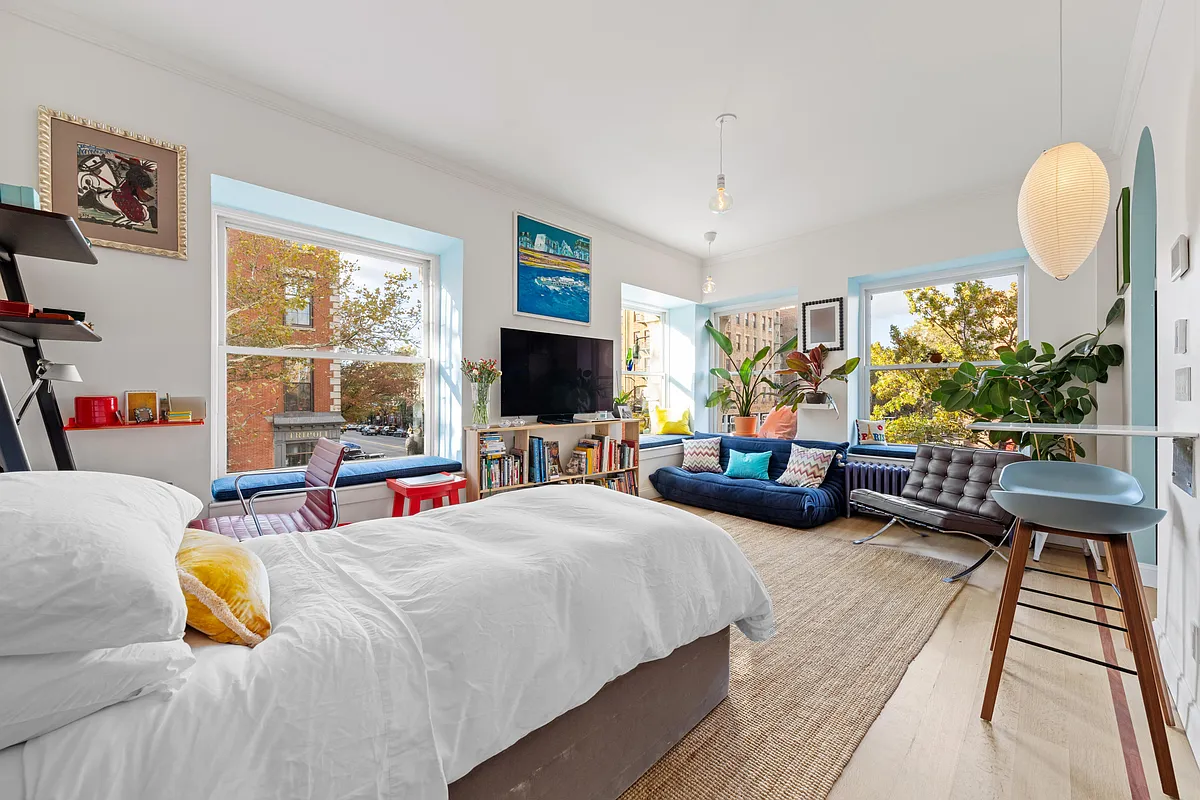Inside Third & Bond: Week 12
This week, the development bloggers at the Hudson Companies discuss the importance of comps, i.e. sales prices of comparable properties, and reveal which projects in the area they think are the closest match to their own townhouse condo project in Gowanus. We know there are a lot of real estate voyeurs reading Brownstoner; people who…

This week, the development bloggers at the Hudson Companies discuss the importance of comps, i.e. sales prices of comparable properties, and reveal which projects in the area they think are the closest match to their own townhouse condo project in Gowanus.
 We know there are a lot of real estate voyeurs reading Brownstoner; people who aren’t professionally involved in real estate and who possibly don’t even own property but are still obsessed with the goings-on. We’ve seen you lurking at the open houses around Carroll Gardens and Park Slope. It’s okay, you’ve seen us, too. Like you, we’re nagging brokers about flooring type and the cost of storage units but then walk out the door without so much as taking a business card. Occasionally we introduce ourselves but more often we go incognito so that we get better attention and the more typical sales pitch. To keep from spilling our developer secrets from suspicious brokers we’ll invent personas, like the trust fund artist (read: wearing jeans on a weekday), the husband-wife team (read: two co-workers), or simply the confused buyer (read: want to see all units). The confused buyer is the one that thinks s/he wants a studio, then asks to see a one bedroom…finally pondering aloud that I just might want to live with a roommate. This one goes over more smoothly when not wearing a wedding ring. Why do we do this? It’s a fun hobby but more to the point, we always need to be tracking market comparables a.k.a. comps.
We know there are a lot of real estate voyeurs reading Brownstoner; people who aren’t professionally involved in real estate and who possibly don’t even own property but are still obsessed with the goings-on. We’ve seen you lurking at the open houses around Carroll Gardens and Park Slope. It’s okay, you’ve seen us, too. Like you, we’re nagging brokers about flooring type and the cost of storage units but then walk out the door without so much as taking a business card. Occasionally we introduce ourselves but more often we go incognito so that we get better attention and the more typical sales pitch. To keep from spilling our developer secrets from suspicious brokers we’ll invent personas, like the trust fund artist (read: wearing jeans on a weekday), the husband-wife team (read: two co-workers), or simply the confused buyer (read: want to see all units). The confused buyer is the one that thinks s/he wants a studio, then asks to see a one bedroom…finally pondering aloud that I just might want to live with a roommate. This one goes over more smoothly when not wearing a wedding ring. Why do we do this? It’s a fun hobby but more to the point, we always need to be tracking market comparables a.k.a. comps.
Comps are critical from the beginning to the end of the project. Initially, we look at comps to see what is selling in the market and for how much. This information helps us set our offer for a site. During the design process, we use comps to talk about what demographic to design to how many bedrooms are they looking for? Will they pay extra for a roof cabana? Banks like to see comps when loaning money for construction they want to be convinced that we’ll sell at the targeted price (or better) so that they will be paid back quickly. You can’t get a loan without an appraisal, and all appraisals using the sales approach need to analyze comps for their valuation (as opposed to the replacement cost approach or income-production approach). At the end of the project, buyers are using comps to determine which project should be their new home and/or investment.
For comps to be good, they need to be recent (6 months to a year is best), from a similar neighborhood, and ideally should be for similar projects. A single family house or a 17-story elevator building are not the best comps for Third & Bond, though information on sales is still useful. Likewise, projects similar in size, amenities, and finishes that are located outside of Carroll Gardens & Gowanus, but in a similar type of neighborhood (e.g., access to transit and type of retail) could be a good comp.
For Third & Bond, we’re primarily looking at Carroll Gardens, Gowanus, Boerum Hill, and Park Slope for residences that have sold within the last year or are for sale now. These are the brownstone Brooklyn neighborhoods that are most similar and in closest geographic proximity. Here are a sampling of a few projects in these neighborhoods that we think make good comps:
L3
191-193 Luquer Street
 The most applicable project is probably L3. The project consists of two new construction buildings flanking the conversion of a former convent. L3 has 18′ wide townhouses as well as floor-through units, most with private outdoor space. There was tremendous demand for the 850-square foot, 2-bedroom, 1-bath apartments priced around $750,000. L3 sold its 12 units at a $750/SF average. One of the duplexes that closed a year ago at $1.075 million, resold this summer for $1.53 million. We like this comp because we think the design and finishes for our project are similar and L3 did very well. We also think our site is better since it is closer to the subway. The problem with this comp is that, except for the resale, it is getting old.
The most applicable project is probably L3. The project consists of two new construction buildings flanking the conversion of a former convent. L3 has 18′ wide townhouses as well as floor-through units, most with private outdoor space. There was tremendous demand for the 850-square foot, 2-bedroom, 1-bath apartments priced around $750,000. L3 sold its 12 units at a $750/SF average. One of the duplexes that closed a year ago at $1.075 million, resold this summer for $1.53 million. We like this comp because we think the design and finishes for our project are similar and L3 did very well. We also think our site is better since it is closer to the subway. The problem with this comp is that, except for the resale, it is getting old.
321 Union
 All eight units of this condo project are currently under contract with occupancy slated for this autumn. Like L3, 321 Union seeks to nestle modern design within a traditional brownstone streetscape. The project boasts finishes such as custom beech cabinetry, Caesarstone kitchen countertops and Toto bathroom fixtures. All of the units have central air and washers/dryers. Most units have private outdoor space. Last time we checked, the average contracted sales price was $787/SF.
All eight units of this condo project are currently under contract with occupancy slated for this autumn. Like L3, 321 Union seeks to nestle modern design within a traditional brownstone streetscape. The project boasts finishes such as custom beech cabinetry, Caesarstone kitchen countertops and Toto bathroom fixtures. All of the units have central air and washers/dryers. Most units have private outdoor space. Last time we checked, the average contracted sales price was $787/SF.
The NoVo
343 Fourth Avenue
 This 113-unit, 12-story project is one of the first new condo projects along Fourth Avenue on the edge of Park Slope. The NoVo is being marketed as luxury living unlike any other options in Park Slope, but it is much like the projects going up in Downtown Brooklyn and elsewhere: interiors by Andres Escobar, concierge, common lounge, children’s playroom, and on-site parking. The NoVo is adjacent to a small neighborhood park with a dog run and basketball courts and is just a block from Park Slope’s Fifth Ave. But, the NoVo is twice as far from any subway lines as our site and the master baths only have one sink!! A look at about 30 recent contracted sales indicates an average sales price of $778/SF. The NoVo is a questionable comp because the project types are so different the scale of the project and amenities offered. Still, it is only a few blocks away and represents a real option for buyers.
This 113-unit, 12-story project is one of the first new condo projects along Fourth Avenue on the edge of Park Slope. The NoVo is being marketed as luxury living unlike any other options in Park Slope, but it is much like the projects going up in Downtown Brooklyn and elsewhere: interiors by Andres Escobar, concierge, common lounge, children’s playroom, and on-site parking. The NoVo is adjacent to a small neighborhood park with a dog run and basketball courts and is just a block from Park Slope’s Fifth Ave. But, the NoVo is twice as far from any subway lines as our site and the master baths only have one sink!! A look at about 30 recent contracted sales indicates an average sales price of $778/SF. The NoVo is a questionable comp because the project types are so different the scale of the project and amenities offered. Still, it is only a few blocks away and represents a real option for buyers.
We find comps by asking our brokers, reading Brownstoner, looking at ads in the Times, and searching websites like Streeteasy, PropertyShark, etc. We also use official public records like those found on Acris where all of NYC’s recorded closings are listed you just have to figure out the block and lot, which is easy enough using Oasis. There are more tools available and the information is getting far more transparent than ever before. Though much of our research can be done comfortably at our desks, there is still no replacement for the knowledge gotten by getting out and strolling the neighborhoods. We see open houses as opportunities to get a first-hand look at finishes and floor plans. Maybe we’ll being seeing you this weekend… until then, if you have comp suggestions for us, which we suspect you do, let us know in the comments.
Inside Third & Bond: Week 11 [Brownstoner]
Inside Third & Bond: Week 10 [Brownstoner]
Inside Third & Bond: Week 9 [Brownstoner]
Inside Third & Bond: Week 8 [Brownstoner]
Inside Third & Bond: Week 7 [Brownstoner]
Inside Third & Bond: Week 6 [Brownstoner]
Inside Third & Bond: Week 5 [Brownstoner]
Inside Third & Bond: Week 4 [Brownstoner]
Inside Third & Bond: Week 3 [Brownstoner]
Inside Third & Bond: Week 2 [Brownstoner]
Inside Third & Bond: Week 1 [Brownstoner]
From our lawyers: This is not an offering. No offering can be made until an offering plan is filed with the Department of Law of the State of New York.”





A (late) question, re: HVAC. In Week 7 you considered several options, and decided on Central A/C and Fin Tube Radiation. Why was radiant floor heating not one of the candidates? It’s common in Asia and the comfort is great. I’d think the energy efficiency would be competitive. I don’t understand why it’s uncommon in these parts.
So, 12:55, you are implying with your sarcasm that every person who sells real estate is unworthy of a little respect and decency? Sure, there are dishonest agents, but there are some decent ones as well. It’s unfair to lump them all together.
Gotta say it, no bank is going to give a construction loan without a fallback rental value.
Let’s also talk absorption, a critical factor in the current market where past performance almost certainly will be better than future performance.
What brownfield next to 3rd & Bond? Do you mean the Whole Foods site across the canal? Or the lot at 5th & Smith? There’s nothing at 3rd & Bond.
12:41–ok, so why not just say “Hi we’re developers doing research which will benefit our whole industry, mind if we take a look?”
No need to pretend you’re “trust fund artists” or “confused buyers.”
Someone is being less than forthright with a real estate agent? Will those paragons of virtue and complete disclosure never catch a break?
What’s happening with the stop work order, and what is the effect on your financing and completion schedule? Is something like this delay typically factored into your time and finance calculations?
How’s that brownfield next to Third&Bond doing these days?
Actually, 12:15, it’s not that bad. Think about it, the developer is doing research so he can build more condos. If the developer builds more condos, then the brokers will have more units to sell. So it’s actually in the brokers long term best interest to be forthcoming with information to the potential developer.